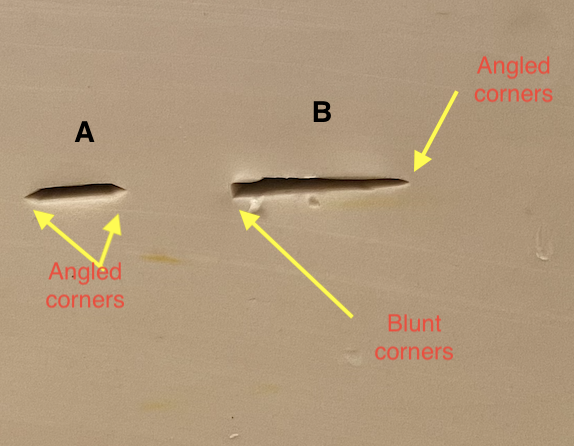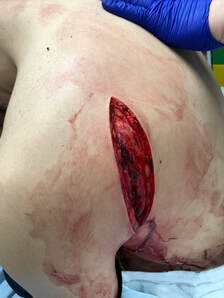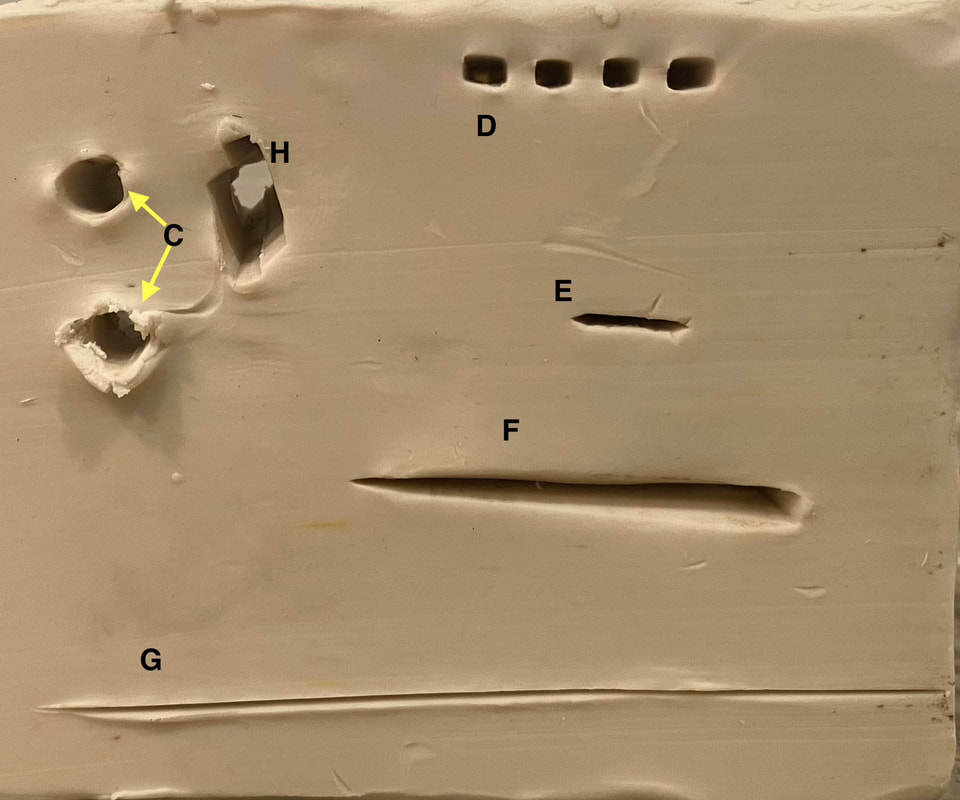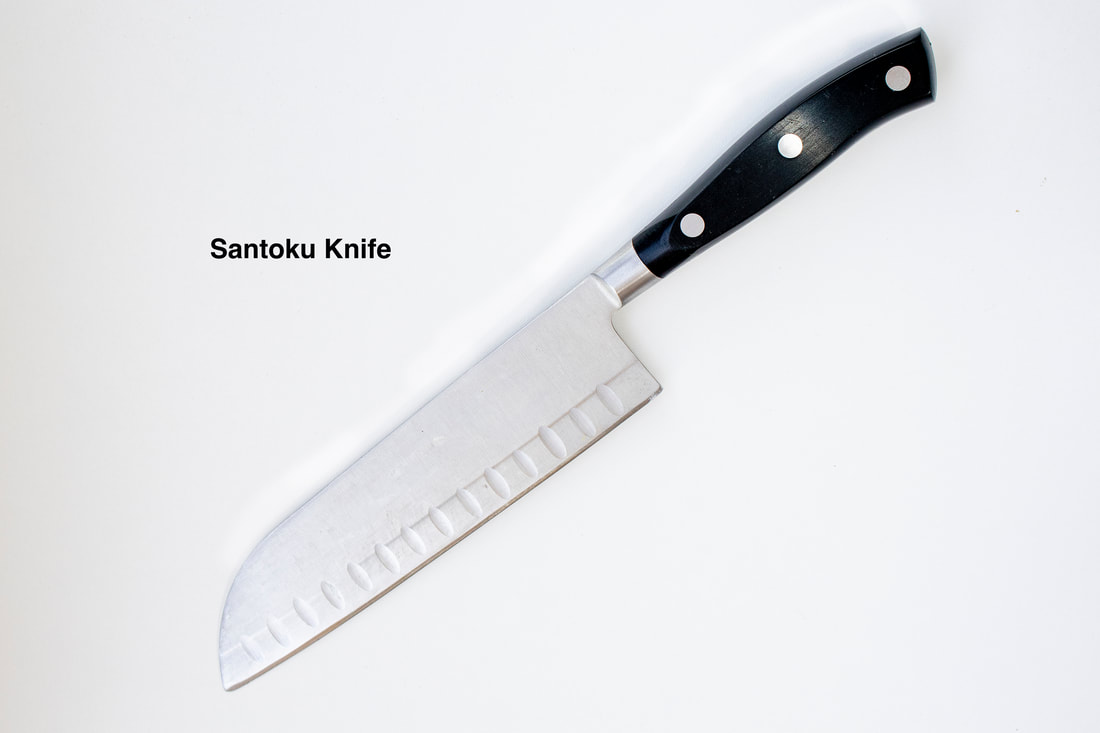 The importance of being able to distinguish what you, as the attorney, are reading about in the medical record can't be overstated. Being able to distinguish between types of injuries and what can cause them can be the key to making or breaking your client's case. This post aims to help attorneys to distinguish between the different types of sharp force wounds that may be listed in a client's medical record as well as describe the types of weapons and forces that can cause those injuries. First, we'd like to point out that not all "cuts" are sharp force trauma. One type of injury that is often mistakenly identified (even in medical records) as sharp force trauma is the laceration. Lacerations are openings in the skin caused by blunt force trauma. Please see our previous post regarding blunt force trauma for more information. Sharp force trauma refers to injuries that are caused by objects with a sharp edge or pointed objects. Deaths due to sharp force trauma are less common than those due to other external means (blunt trauma, gunshot wounds, poisoning/toxicity/overdose, hanging/suffocation). According to a 2016 CDC report, most deaths due to sharp-force trauma are caused by homicide (10.6% of homicides), followed by suicide (2% of suicides). Death by accidental sharp force trauma is relatively rare. Some features that are distinctive to suicidal sharp force wounds are that they usually occur to bare skin (often underneath clothing); multiple wound tracks may be found or described within a single slit in the skin (as if knife were partially pulled out and then thrust further in); they are in an area that a person can reach on oneself; and they are usually grouped together. You also don’t see defensive wounds in cases of suicide, but in cases where the victim could not defend themselves for some reason you won’t see them in homicides either. Sharp force injuries can fall into one of three basic categories: stab/puncture wounds, incised wounds, and chop wounds. Stab/puncture wounds are usually greater in depth than in surface area. The direction of force (the direction the weapon causing the injuries was moving) is perpendicular to the body. The most common instrument used in stabbings is a knife, but other instruments include scissors, screwdrivers, forks and other pointed objects. Due to the perpendicular direction of force the injuries involve not only the victim's skin but also underlying tissue and organs. The type of weapon used can often be identified based on the wound's characteristics. A skilled pathologist or medical examiner will know how to position the skin in order to obtain information about the weapon's shape. This sometimes involves making additional cuts to the skin (if the victim is deceased). The corners, or angles, of a stab wound can be described as as angled, squared, or indeterminate. In this image you can see two "stab wounds" a block of clay has received from two cutting instruments. Injury A shows a wound with two angled corners, indicating that the blade used to create it was double-edged. Injury B shows an angled corner on the far-right wound margin and a blunt margin on the left, indicating the blade was sharpened only on one side (like a standard kitchen knife). In the next image you can see puncture wounds from a screwdriver (C), a pair of scissors (H), and a serving fork (D). The lower of the two wounds marked C shows the "exit wound" of the screwdriver through the medium. You can see how skin and tissue may be pushed outward. The "wound" marked E was caused by a double-edged weapon. Please note that both of the corners of the wound are angled. Wounds F & G were both caused by the same weapon, a large santoku knife (pictured below). Wound F is a stab wound, while wound G demonstrated a different type of sharp force trauma- an incised wound. Incised wounds are caused by sharp weapons (usually blades) that come into contact with the skin at a parallel or tangential angle.In contrast to a stab wound, an incised wound usually has greater surface area than depth; that is to say the wounds are usually longer than they are deep. Incised wounds can involve skin only, or can go deeper and involve subcutaneous tissue, blood vessels and nerves. In addition to knives, incised wounds can be caused by razors, scalpels, and box cutters, among other implements. Additionally, while the depth of a stab wound is limited by the length of the blade/implement, an incised wound can be much, much longer than the blade or cutting surface (see scalpel image below). PLEASE NOTE THAT BY CLICKING THE 'READ MORE' BAR (BELOW THIS NOTICE TO THE RIGHT, YOU WILL SEE PHOTOGRAPHS OF SHARP FORCE TRAUMA WHICH MAY BE DISTURBING TO SOME READERS. PROCEED WITH CAUTION. A third classification of sharp force trauma is a chop wound. Chop wounds actually combine aspects of both sharp- and blunt-force trauma and occur when a bulky and/or fast-moving, edged-object hits the body. Normally chop wounds will have signs of blunt-force trauma around the edges, especially if the edge is blunter. However in additional to blunt force injuries, chop wounds show marked destruction of subcutaneous tissue which often extends to underlying bone and organs. Chop wounds are often described as "gaping." If chop wounds involve arms, legs, or fingers/toes, amputation may result.  In this image of a machete wound involving the back of the victim's shoulder, the angled corners at both ends of the wound indicate a single blow from a sharp blade. Notice also the lack of blunt force injuries surrounding the wound, even though the blow was obviously carried out with great force in order to cause the depth of the wound seen here. Common causes of chop wounds are axes, crowbars, and hatchets. Although very rare, chop wounds can also be incurred accidentally. This is usually seen when a person's body comes into contact with a moving propeller such as that of a plane, lawn mower blade, or boat. We hope that this post has given you some insight into how to identify and interpret different types of sharp force injuries. If you still have questions, give us a call or send us an e-mail to speak to a nurse today for a free 30 min telephone case consultation. Don't forget to check out our post on Identifying Blunt Force Trauma, as well as our blog series on identifying a remediating missing and altered medical records.
0 Comments
Leave a Reply. |
Archives
February 2022
AuthorI'm Jennifer Pettigrew and, true story, I first became interested in Legal Nurse Consulting after my auto insurance company was sued following a car accident in which I was found to be at fault. I wasn't sued until after the statute of limitations was up but an exception was made and the plaintiff alleged that because of being rear-ended he was on pain medications chronically which caused him to develop diabetes and become blind. As a nurse I knew that Diabetic retinopathy cannot develop over the course of just a few years but rather is a complication that develops after several years of untreated or poorly treated diabetes. The case was settled by the insurance company before ever going to court for several million dollars, but from that point on I have been interested in the difference medical professionals could make in legal proceedings.
|
Search by typing & pressing enter




 RSS Feed
RSS Feed